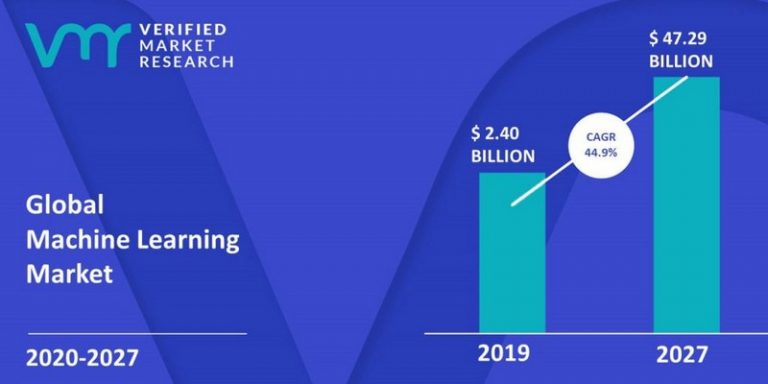
Verified Market Research, an agency specializing in market research, has published its survey on the machine learning market as well as its deployment by companies. A market valued at ![]() 47.3 billion by the year 2027, growing at a CAGR of 44.9% between 2020 and 2017. This document provides a holistic assessment of the industry with a comprehensive analysis of key segments, trends, drivers, restraints, competitive landscape, as well as predominant factors.
47.3 billion by the year 2027, growing at a CAGR of 44.9% between 2020 and 2017. This document provides a holistic assessment of the industry with a comprehensive analysis of key segments, trends, drivers, restraints, competitive landscape, as well as predominant factors.
Global Machine Learning Market Overview
Technological advancement is the major driver of the global machine learning market. This sector along with AI is the new focus area for IT and development organizations. Companies are crying out to hire talent in these areas, and there is a real shortage of qualified and skilled professionals in the market today.
The rapid advancement of technology in the image recognition system has increased the accuracy of the system, which has fueled the demand for machine learning tools in various systems. For instance, in image labeling, the accuracy of machine learning was 72% in 2010 and it reached 96% in 2015. The ability of machines to process big data and use the data for prediction, makes machine learning a key tool in various applications such as insurance, banking, finance, healthcare, etc.
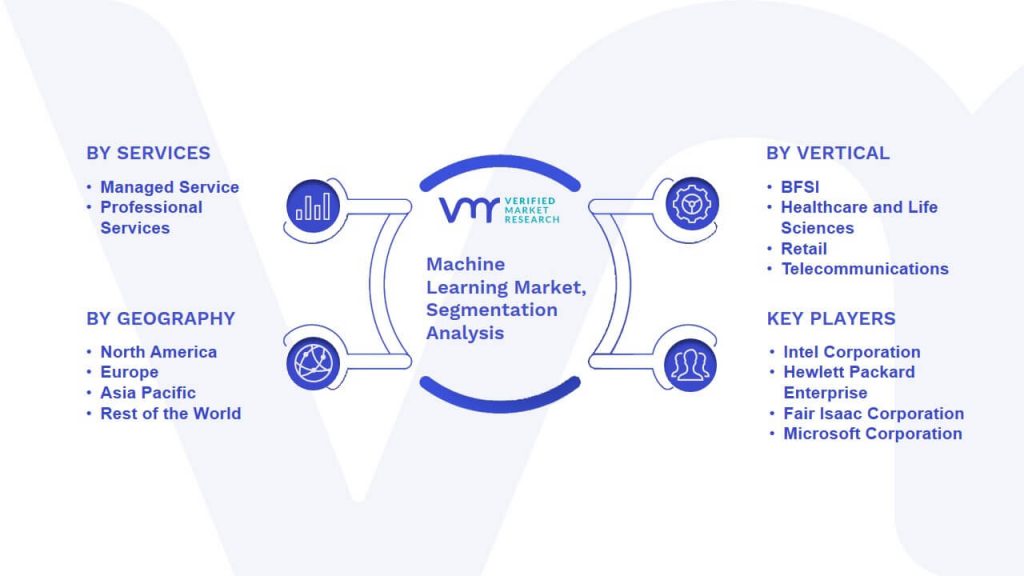
Other sectors are seeing a growing demand such as advanced robotic systems in automotive, electronics or food processing. According to the International Federation of Robots, in 2016, approximately 294,000 industrial robot units were deployed worldwide. For example: In 2016, Fanuc, a Japan-based company announced the development of a robot with a deep reinforcement learning technique, which allows the robot to train itself over a very short period of time.
However, there are two major problems faced by a large number of organizations wishing to include machine learning in their business processes:
- Lack of qualified employees with analytical skills.
- Privacy issues.
Deployment model, active sectors, structure sizes, geographical area, key companies
Machine learning is based on a deployment model that is bifurcating the market: it is cloud-based or implemented directly on-premises. The deployment mode is expected to hold the largest market share by 2027 with a high growth rate. Flexibility, automated software updates, disaster recovery via cloud-based backup systems, increased collaboration, document version control monitoring, and data loss prevention with robust cloud storage facilities are the benefits that have driven the adoption of cloud-based delivery models for machine learning software solutions and services.
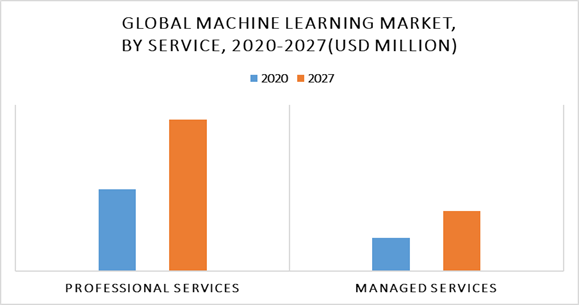
Large companies have a head start on smaller companies, but both will grow at a rapid pace. SMEs will not be left behind as they will be driven by the democratization of services and by real constraints such as cybersecurity.
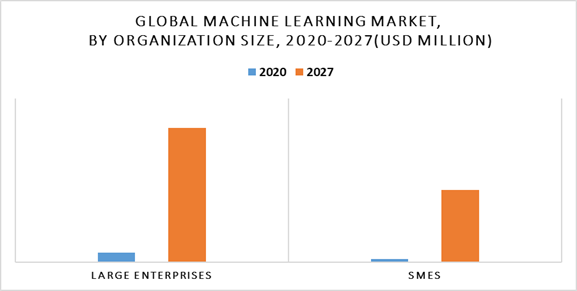
While there are already disparities between sectors, applications related to healthcare and the banking/insurance/financial sector should continue to break away with volumes almost twice as high as the other sectors.
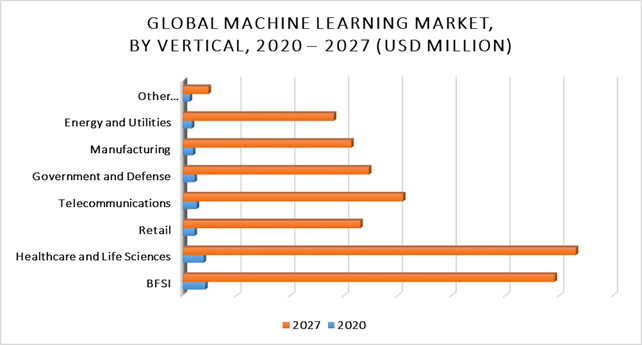
According to Verified Market Research’s geographical analysis of the machine learning market, North America is the largest revenue generating region. This is mainly due to the focus on R&D-led innovations in the developed economies of the U.S. and Canada. However, the Asia-Pacific region is expected to have the highest growth rate over the period 2020-2027.
To conclude, the study states that there are several key companies or drivers in the machine learning world: Intel, Hewlett Packard Enterprise (HPE), FICO, Microsoft, Google, Amazon, Bigml, SAS Institute, Baidu or Appendix. These large firms are known to make a large number of acquisitions, which is also stated in a CBInsights survey.
Translated from Enquête : focus sur le marché mondial du machine learning sur la période 2020-2027









